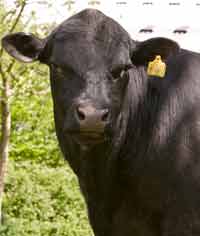Bull proofs 2010 allow more informed breeding choice

Farmers selecting bulls using the new 2010 DairyCo breeding+ bull proofs will be able to compare genetic indices between breeds, select on calving ease and assess indexes for new breeds.
Published on 12 January 2010, the new proofs are designed to help farmers make more informed breeding choices, says Marco Winters, director of DairyCo breeding+.
One of the most visible differences in the proofs will be as a result of re-setting the average genetic merit base to which bulls are compared.
Re-setting average genetic merit base“This is done every five years, so the new base will use the average genetic merit of calves born in 2005.
By re-calculating genetic indexes in line with the new base, the indexes of all bulls will come down in number. However, because they all come down to the same degree, there will be no change in ranking, Mr Winter explains.
“Preliminary figures for the Holstein suggest these changes will result in a bull coming down by an average of 150kg of milk with a 35-point drop in PLI across a range of traits.
“If we did not re-set this base, farmers could be mis-lead that a bull is an improver for a specific trait,” he says.
Another change in the proofs will allow breeders to compare genetic indexes between breeds for the first time.
Comparisons between breeds“Before, producers could only evaluate within breed, making bull selection difficult for farmers interested in cross breeding.”
With the new model it is possible to make direct comparisons between breeds.
“The indexes will still be published for individual breeds, but producers will be able to carry out a simple conversion to compare between breeds.”
This information will also provide better advice to Ayrshire and Shorthorn breeders who are using Holsteins as part of their breeding programmes.
And at last, those farmers milk recording and cross breeding will be able to get proofs.
“Proofs for new breeds such as Brown Swiss and Montbelliardes will also be available and the PLI for coloured breeds will also include the fertility index, in line with the Holsteins and Friesians.”
Another new edition to the bull proof will be calving ease indexes.
Calving ease indexesThis is the first time independent calving ease indexes have been produced in the UK and follows industry-wide collaboration and analysis of 400,000 calving records, says Mr Winters.
Calving ease indexes will be expressed on a scale of about -4 to +4 around a breed average of zero. “Positive figures indicate calvings are predicted to be easier than average and negative figures predict more difficult calving,” he explains.
The two genetic indexes – Direct Calving Ease (dCE) and Maternal Calving Ease (mCE) – together give a complete picture of a bull’s “calving performance”.
“Direct Calving Ease gives a prediction of the ease with which a calf by that sire will be born and Maternal Calving Ease predicts the ease with which a daughter of that sire will give birth.”
Although Direct Calving Ease is likely to be of more interest in the first instance and will be important when breeding maiden heifers, attention must also be paid to mCE.
“Long-term selection for dCE without regard for mCE could set up problems in the future,” he says.
